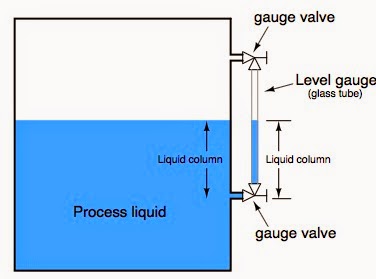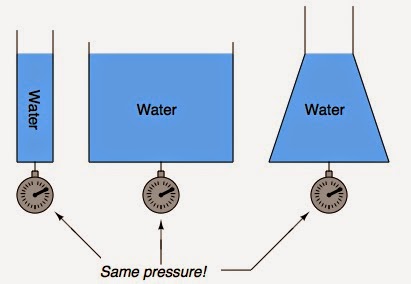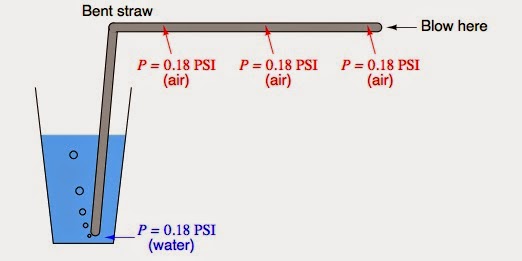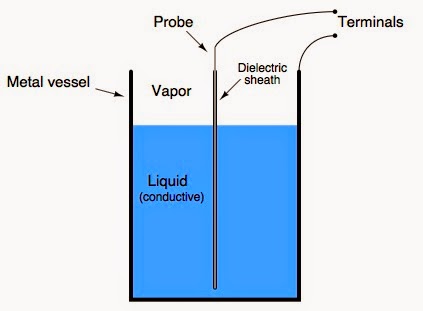In many industrial processes, the measurement of level is critical. Depending on the nature of the material being measured, this can be a simple or complex task. Several different technologies for sensing level are briefly explained here.
 |
| Gauge or Sightglass |
Level Gauges or Sightglasses
The simplest form of level measurement for direct measurement of level (almost always visually) in a vessel. A level gauge (sightglass) is usually a clear tube connected to the a vessel at the highest and lowest part of the level range. The fluid level inside the vessel will be at the same hight as the level in the tube.
 |
| Float |
Floats
Another very simple approach to level measurement for fluids or solids is the float. The float sits on
top of the material being measured and is visually, magnetically, or electronically located and equated to the level inside the vessel. It is important that the float material be compatible with the process media and that it freely moves on top of the process.
 |
| Hydrostatic Level |
A very popular way to measure level because of the ease in equating the pressure of a fluid column with the level inside the vessel. In it's simplest form, a pressure sensor (gauge or transmitter) is attached to the bottom of a vessel and measures the pressure of the column. This pressure reading is then interpreted as level.
 |
| Bubbler Principle |
Bubbler Systems
A variation of the hydrostatic pressure method, bubbler systems measure the pressure of a purge gas being injected into the fluid in a vessel through a dip tube. This approach comes in handy when sensing the level of corrosive fluids. The principle of operation is that the amount of pressure to "push" an inert purge gas through the dip tube will change according to the level in that vessel, and therefore can be correlated to the level.
 |
| Displacer Level |
Displacer Level
 |
| Echo |
Echo (Ultrasonic, Radar, Laser)
Level measured by bouncing some wave form (sound, light, magnet) off the surface of liquids and measuring their time of flight.
 |
| Capacitance Level |
Capacitance Level
Weight
Level is measured by knowing the empty weight of a vessel and the full weigh of a vessel and calibrating the points between.
Image attribution: courtesy of "Lessons In Industrial Instrumentation" by Tony R. Kuphaldt